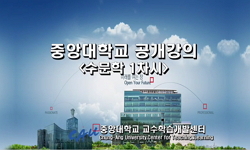연구목적 : 본 연구는 물 기근을 겪는 리비아에 대수로공사에 의한 담수수급(Water Demand & Supply)과 인구증가 및 도시화, 농지확장과 농산물 생산증대, 산업발전 및 경제성장 추이에 의한 사회...
http://chineseinput.net/에서 pinyin(병음)방식으로 중국어를 변환할 수 있습니다.
변환된 중국어를 복사하여 사용하시면 됩니다.
- 中文 을 입력하시려면 zhongwen을 입력하시고 space를누르시면됩니다.
- 北京 을 입력하시려면 beijing을 입력하시고 space를 누르시면 됩니다.
리비아 대수로공사 사례로 본 사회경제적 변화에 관한 연구 = A Study on the Socioeconomic Changes in the Case of the Great Man-made River Project in Libya
한글로보기https://www.riss.kr/link?id=A106951115
- 저자
- 발행기관
- 학술지명
- 권호사항
-
발행연도
2020
-
작성언어
-
- 주제어
-
KDC
543
-
자료형태
학술저널
-
수록면
1-11(11쪽)
- 제공처
-
0
상세조회 -
0
다운로드
부가정보
국문 초록 (Abstract)
연구목적 : 본 연구는 물 기근을 겪는 리비아에 대수로공사에 의한 담수수급(Water Demand & Supply)과 인구증가 및 도시화, 농지확장과 농산물 생산증대, 산업발전 및 경제성장 추이에 의한 사회경제적 변화(Socioeconomic Change)에 관한 연구를 목적으로 한다. 연구방법 : 리비아 대수로공사에 의한 담수공급(Water Supply) 전후(前後)의 리비아와 관련 국가들에 대한 문헌고찰과, 사례연구를 통하여 리비아의 사회경제적 변화 즉 인구증가와 도시화, 농지확장과 농산물 생산증대, 산업발전 및 경제성장 등을 연구문제로 설정하여 비교분석하였다. 연구결과 : 결과분석은 1984년 리비아 대수로공사를 시작하여 1989년부터 물 공급을 시작한 전후(前後) 기간의 리비아 물 공급은 생활용수 3.8억톤(1985)에서 8.3억톤(2005)으로, 농업용수 6.5억톤(1980)에서 46.9억톤(2000)으로, 산업용수 500만톤(1980)에서 1.8억톤(2005)으로 증가, 농지면적 382천 ha(1980)에서 470천 ha로 증가, GDP는 105억 디나(1980)에서 545억 디나(2005)로 증가하였다. 결론 : 대수로공사에 의한 담수공급(설계수량 일일 600만톤)이 인구증가 및 도시화와의 관계, 가장 많이 소비되는 지중해 연안의 농지에 농업용수의 공급 등으로 농경지 확장과 농산물 생산증대, 산업용수 공급에 의한 산업 활성화, 상수도에 의한 먹는 물 공급으로 인한 리비아인 들의 생활환경 및 수준 향상 등으로 대수공사가 리비아 경제성장에 이바지하여 긍정적인 사회경제적 변화가 일어났으며, 대수로공사 모델을 다른 유사물 부족국가에 적용할 수 있을 것이다.
다국어 초록 (Multilingual Abstract)
Purpose: This study was conducted to examine water demand & supply by the Great Man-made Project in Libya, which suffered from water famine. This study focus on how Great Man-made Project effected socially. For example, increase population growth whic...
Purpose: This study was conducted to examine water demand & supply by the Great Man-made Project in Libya, which suffered from water famine. This study focus on how Great Man-made Project effected socially. For example, increase population growth which led to urbanization, increase production of agricultural products, industrial development and economic growth. Method: Through a study of Libya before and after the Water Supply by the Great Man-made Project, and a case study, the socioeconomic changes in Libya, such as population growth and urbanization, farmland expansion and agricultural production increase, industrial development and economic growth, were set up and analyzed as research questions. Results: The results of the analysis were through water supply from the Great Man-made Project, The results of the analysis were through water supply from the Great Man-made Project, increasing water supply from 380 million tons(1985) to 830 million tons(2005) and 650 million tons of agricultural water(1980) to 4.7 billion tons(2000), industrial water from 5 million tons(1980) to 180 million tons (2005) and increasing agricultural land area from 382 thousand ha(1980) to 470 thousand ha, GDP 10.5 billion Libyan dinars(1980) to 54.5 billion Libyan dinars(2005). Conclusion: This socioeconomic change was made by the Great Man-made Project in Libya which provided freshwater supply(design quantity about 6 million tons per day) which led to population growth and urbanization, agricultural water supply to the most consumed farmland in the Mediterranean Sea. In addition, fresh water contributed to revitalize the industry by industrial water supply, and improve living conditions, and drinking water supply and this project model could be applied to other similar water shortage countries.
목차 (Table of Contents)
- 1. 서 론 2. 이론적 배경 및 선행연구 3. 사례연구 4. 결과 분석 5. 결 론 REFERENCES
- 1. 서 론 2. 이론적 배경 및 선행연구 3. 사례연구 4. 결과 분석 5. 결 론 REFERENCES
동일학술지(권/호) 다른 논문
-
4차 산업혁명 시대의 건설현장 VR체험안전교육에 대한 연구
- 경기대학교 재난안전연구소
- Choi
- 2020
-
- 경기대학교 재난안전연구소
- 임범준(Beom-Jun Lim)
- 2020
-
건축물 3종 안전점검 사례분석에 따른 기법 및 제도 개선에 관한 연구
- 경기대학교 재난안전연구소
- Park
- 2020
-
- 경기대학교 재난안전연구소
- 홍하나(Ha-na Hong)
- 2020




 스콜라
스콜라






